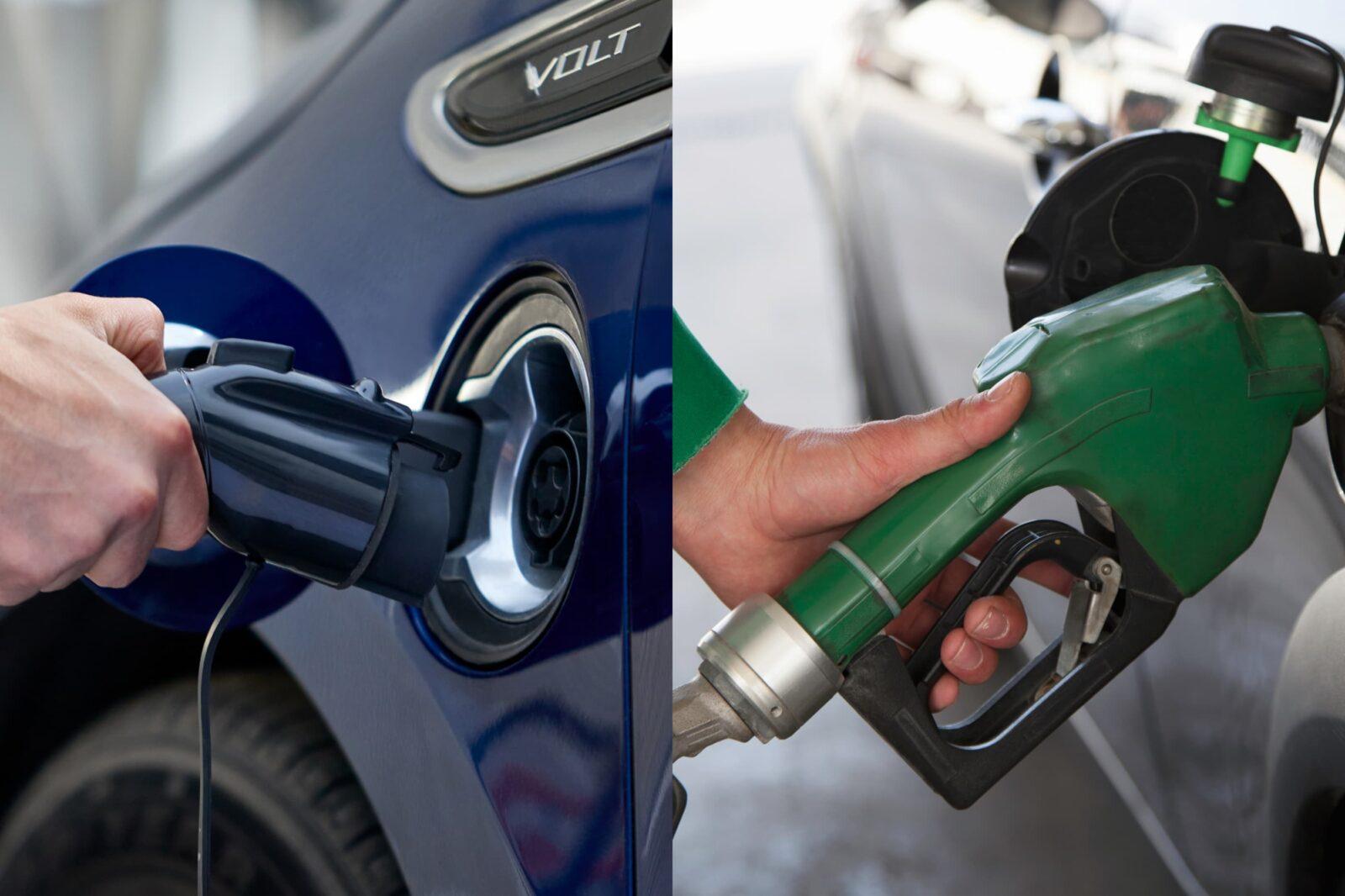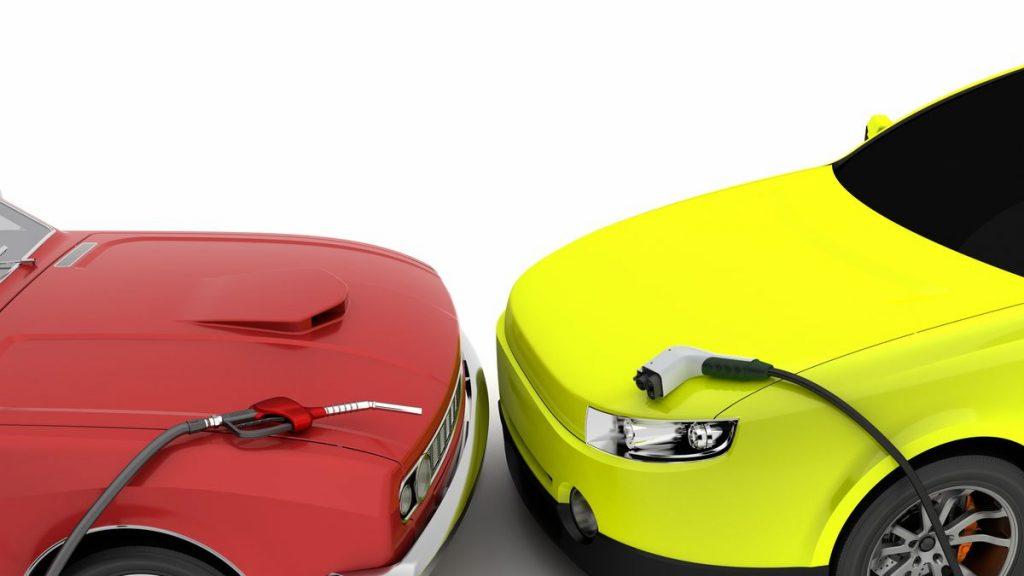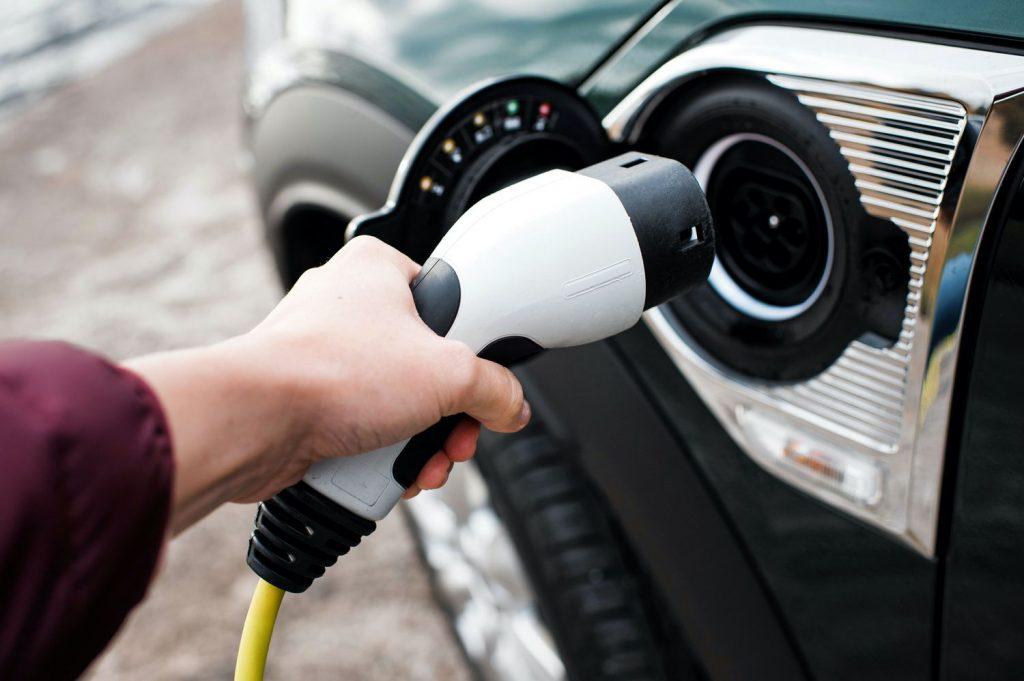Long-Term Savings: Electric Vehicles vs Conventional Cars
By Sebastian Orellana
Updated Feb 17, 2024

This comprehensive article deeply dive into comparing Electric Vehicles (EVs) and Conventional Cars. We'll explore the basic definitions and understand the working principles of both. Following this, we'll investigate thorough cost analysis, considering factors like initial purchase, fuel and electricity costs, maintenance, insurance, and more. Electric vehicles (EVs) are cars that are powered by electricity. Unlike conventional cars, EVs do not have a traditional internal combustion engine.
Table of Contents
Instead, they have an electric motor that uses energy stored in rechargeable batteries. The batteries are charged by plugging the vehicle into an electrical power source. Efficiency is one of the perks of EVs; they convert about 59-62% of the electrical energy from the grid to power the wheels, while conventional cars only convert about 17-21% of the energy stored in gasoline.
In contrast, conventional cars, also known as gas-powered or internal combustion engine vehicles (ICEs), operate on gasoline or diesel and rely on traditional fuels for propulsion. These cars work by igniting the fuel that causes a chemical reaction, producing gases that expand and drive pistons, which power the vehicle's wheels. The two primary types of conventional cars are petrol and diesel.
READ: Projected Cost Trends for Long-Range Electric Vehicles
Comparing Electric Vehicles and Conventional Cars

Safety Comparison
When comparing electric and conventional cars economically, it's essential to consider both the initial purchase price and the ongoing operating costs. While electric vehicles are more expensive upfront, recharging an EV is typically much lower than refueling a conventional car. This cost difference can, over time, offset the initial expenditure. Various incentives and tax breaks are available to EV owners that can further reduce their financial burden.
From an environmental perspective, electric vehicles are more sustainable than conventional cars. This is primarily because they don't emit greenhouse gases like CO2 when driving. They also don't produce tailpipe pollution. However, while the emissions produced during the driving of EVs are nonexistent, pollution is created during manufacturing and the production of electricity needed to power them.
The performance of EVs is typically on par or superior to conventional cars. Electric cars provide smooth, quiet rides and quicker acceleration from a standstill due to the immediate availability of torque. However, the total range of these vehicles is usually less than their gasoline counterparts due to battery limitations.
Regarding safety, both electric and conventional cars have to meet the same safety standards. However, because electric cars are generally heavier due to the battery pack, they often have better stability. Additionally, the lack of a fuel tank makes them less likely to catch fire in the event of an accident.
The Future of Electric Vehicles and Conventional Cars
The Continued Relevance of Conventional Cars
The prospects for electric vehicles are promising. More and more car manufacturers are investing in the development of electric technology, and governments worldwide are implementing policies supportive of this transition. Moreover, as battery technology continues to improve, the range and performance of EVs are expected to increase while prices are predicted to fall.
Nonetheless, electric vehicles face some challenges, particularly concerning the charging infrastructure. Not every home or city is equipped with sufficient charging stations. In places where charging points are sparse, owning an EV can be inconvenient. Additionally, despite advancements in battery technology, range anxiety (fear of running out of energy before reaching a charging point) remains an issue for prospective EV owners.
Conventional cars will likely remain relevant for some time, especially in areas with underdeveloped EV infrastructure. They are also more suited for long trips or areas with extreme temperatures, as they don't depend on battery charge or suffer from reduced performance in hot or cold weather. Additionally, until electric vehicles become more affordable, conventional cars will continue to dominate the budget and second-hand car markets.
READ: Is Fox Shocks Better Than Bilstein?
Cost Comparison Between Electric Vehicles and Conventional Cars

The continuous technological advancements have paved the way for the invention of electric vehicles (EVs), dramatically transforming the automotive industry. There has been a significant escalation in the demand for EVs due to their eco-friendly nature and fuel efficiency. However, conventional cars still dominate the market due to their affordability and availability of fuel stations. This detailed analysis aims to compare the costs of electric vehicles and conventional cars to help consumers make a more informed buying decision.
The Initial Purchase Costs
The initial purchase price is the first and most significant cost car buyers encounter. Generally, electric vehicles tend to be more expensive than their petrol or diesel counterparts due to the cost of manufacturing large, sophisticated batteries. While technological advancements are bringing down the price slowly, EVs are often seen as luxury purchases and can come with price tags that reflect such.
However, this doesn't mean that EVs are unaffordable. The cost varies depending on the model and make of the car. Government incentives and trade-in programs can help offset the initial cost, making EVs a more attractive option for many potential buyers.
Conventional cars, on the other hand, have a more diverse pricing range. Entry-level models are often significantly cheaper than electric vehicles, giving consumers more options and flexibility.
Cost of Fuel versus Electricity
One of the primary operating costs of any vehicle is fuel and energy expenses. Interestingly, this is where electric vehicles start to bridge the price gap with conventional cars. Charging an electric vehicle is a fraction of the cost of filling a petrol engine with fuel.
However, the cost savings can depend heavily on the price of electricity and petrol in your region. Additionally, installing a home charging station for an electric vehicle should be factored into the overall electricity costs.
Cost of Maintenance and Repairs
Maintenance and repairs are another major consideration in the cost of owning a vehicle. Here, electric vehicles tend to shine. A standard combustion engine has hundreds of moving parts that can wear and tear over time, requiring regular service and potentially expensive repairs.
However, electric vehicles have fewer moving parts, reducing maintenance needs. Moreover, with no exhaust systems, oil filters, or spark plugs, electric cars tend to cost less over time in servicing. However, it's worth noting that battery replacements can be expensive for electric vehicles if they are out of warranty.
Insurance and Other Costs
Finally, the cost of insuring an electric vehicle versus a conventional car can vary greatly based on several factors, including the make and model, your driving record, and where you live. While some insurers offer discounts for environmentally friendly vehicles, the higher initial cost of electric vehicles can result in higher insurance premiums.
Other costs to consider when comparing electric and conventional cars include depreciation, taxes, and registration fees. These can significantly affect the total cost of ownership and should not be overlooked when making a purchase decision.
In conclusion, while the initial purchase price of electric vehicles might be higher, the operating and maintenance costs tend to be lower, making them a cost-effective investment in the long run. However, it's vital to consider your circumstances and driving habits to make the best decision for your individual needs.
Environmental Impacts of Electric Vehicles and Conventional Cars

The rapid shift to electric vehicles (EVs) represents one of the most significant changes in transportation today. In this context, understanding the ecological implications of electric and conventional cars has become critical to comprehending the real progression toward a sustainable future.
Emission Comparison: CO2 impact
The most significant difference in the environmental impacts between conventional cars and EVs is in their respective CO2 emissions. Conventional cars, which typically run on petrol or diesel, emit direct emissions into the atmosphere. These emissions consist primarily of greenhouse gases (GHGs), including carbon dioxide (CO2) and methane (CH4). Increased greenhouse gas emissions contribute significantly to global warming.
On the other hand, electric vehicles produce zero direct emissions. While it's true that electricity production isn't entirely clear, with coal and gas playing a significant role in many countries power generation, the overall emissions produced by EVs, even when considering their entire lifecycle, are still often considerably less than those of conventional cars. So when it comes to CO2 emissions, EVs do seem to have a distinct advantage.
Nevertheless, it's evident that the upfront emissions produced while manufacturing the vehicle for electric cars exceed those of traditional vehicles due to the energy needed to produce the lithium-ion batteries EVs use. This fact points to a nuanced conversation regarding emissions, highlighting the importance of life-cycle analyses for high-stakes climate decisions.
Analysis of Sound Pollution
Sound pollution is an oft-overlooked aspect of the environmental conversation, but it's an area where electric cars shine. Traditional vehicles, particularly those operating inefficiently or in poor repair, can produce significant noise pollution. This constant backdrop of engine noise in our cities could adversely affect human health and urban animal behaviors.
Electric vehicles are much quieter and thus contribute far less to the ambient urban noise levels. The noise reduction could significantly improve the quality of urban life, lending more peace and calmness to city living.
The Renewability Factor: Fossil Fuels vs. Renewable Energy
Perhaps the most crucial factor underlying the environmental comparison of electric and conventional vehicles is the contrasts in their energy sources. Conventional vehicles rely heavily on fossil fuels - a finite, non-renewable resource associated with a host of environmental problems, from oil spills to air pollution.
In contrast, electric cars run on electricity that can be sourced from a wide array of means, many of them renewable. If the electricity used to power electric vehicles is sourced from renewable resources, such as solar or wind, then the environmental footprint of EVs can be even lower. Coupling renewable energy sources with electric vehicle uptake is potentially a significant step towards becoming more sustainable as a planet.
In conclusion, electric vehicles hold the key to a more sustainable future in terms of environmental impacts. However, the path to sustainability in transportation involves more than simply shifting from conventional cars to EVs. It's essential also to have cleaner and more sustainable ways of generating electricity.
Long-Term Savings Analysis: Electric Vehicles vs Conventional Cars

From the initial look, electric vehicles (EVs) seem more expensive upfront than conventional cars. However, EVs could be more economical when other aspects such as depreciation, resale value, government incentives, and maintenance costs are considered over the long term. Let’s dig deeper into each of these aspects.
Depreciation: Rate of Value Loss Over Time
An essential factor to remember when comparing the savings of EVs to conventional cars is the rate of depreciation, or how rapidly a car loses its value over time. One critical aspect here is that EVs tend to depreciate faster than conventional cars due to limited battery lifespan and rapid advancements in EV technology. However, we could expect depreciation rates to slow as battery technology improves, bringing the depreciation rates closer to conventional cars. Worth mentioning that the rate of depreciation can also depend on the brand of the car.
Resale Value Comparison
While the higher depreciation rate of EVs could make you think their resale value would be lower, it's not always the case. Depending on the brand and model, some EVs might have a higher resale value than expected, given their superior performance, reliability, and lower maintenance costs. Not to forget, the increasing demand for used EVs could also boost their resale value. On the other hand, conventional cars have a predictable resale value curve based on the vehicle's age, mileage, and condition. However, their resale value could drop sharply if there are significant shifts in the business, like high fuel price bursts.
Impact of Government Incentives on Savings
One significant advantage of investing in an EV is that different governments offer various incentives, such as tax credits or rebates, to promote the use of EVs. These incentives can considerably lower the overall cost of ownership of an EV compared to a conventional car. However, it depends on the specific incentives available in your location. Furthermore, these incentives will change over time as governments adjust their policies and programs to meet their emission reduction targets.
Break-Even Analysis: When Do Electric Vehicles Become More Economical
So, when do the numbers finally favor EVs over conventional cars? This point, called the 'break-even point', depends on various factors, including the cost of electricity and fuel at your location, the distance you drive each day, the incentives available, and the maintenance cost. However, on average, it usually takes a few years of owning and using an EV for the savings to outweigh the higher initial purchase cost.
The Future: Electric Vehicles and Conventional Cars
The future of EVs and conventional cars can be unpredictable. However, trends and advancements in technology can provide us with some clues.
Predicted cost trends for Electric Vehicles and Conventional Cars
As battery technology improves and production costs decrease, the initial purchase price of EVs is expected to continue to drop over the coming few years. On the flip side, conventional cars' prices might remain relatively stable. However, they could become more expensive if governments increase taxes on highly polluting vehicles or fuel prices rise.
READ: What Happens If An Electric Car Runs Out Of Power On The Road
Impact of Technology Advancements on Cost
The pace of technological advancement also has a significant impact on EVs. Rapid innovations in battery technology are increasing battery lifespan and reducing replacement costs. At the same time, advancements are also improving the efficiency and performance of EVs, potentially making them more attractive to buyers and increasing their resale value. This scenario could eventually bring down the total ownership costs of EVs compared to conventional cars.
Potential Developments in Fuel and Electricity Prices
Future energy prices are another factor to consider. If fuel prices increase dramatically while electricity costs continue to decline, the cost advantage could shift towards EVs. Likewise, if renewable energy sources become more common, it could drive down electricity costs, further improving the economic argument for EVs. Ultimately, the relative economics of EVs and conventional cars will largely depend on how these trends evolve over time.
